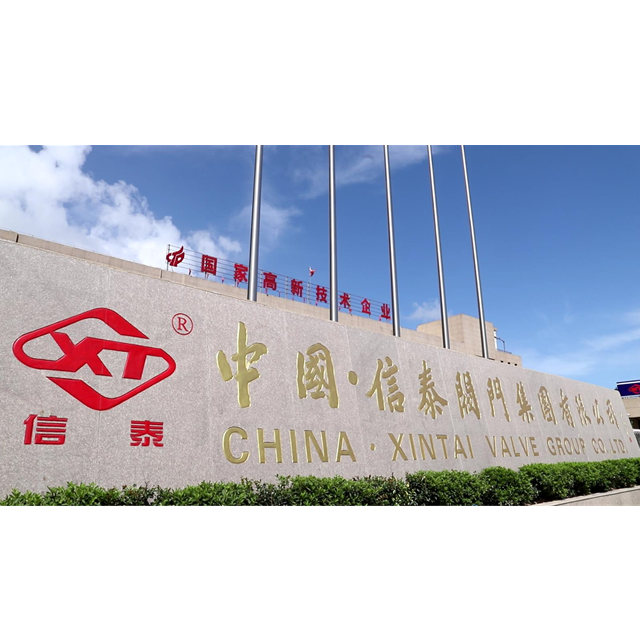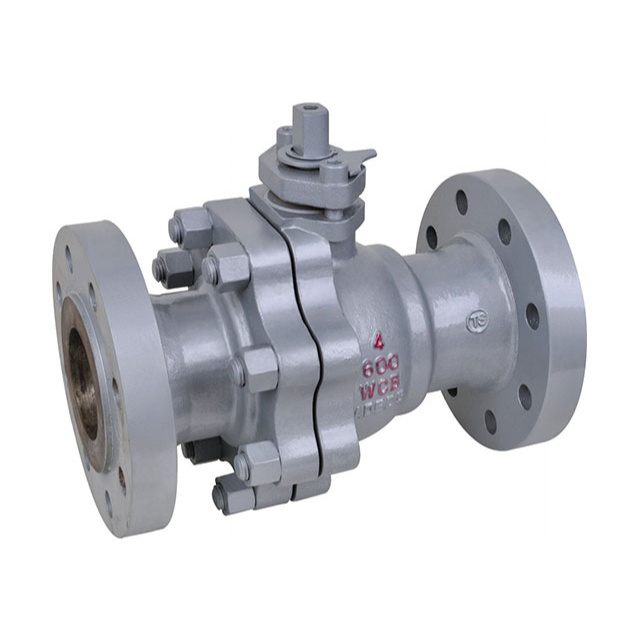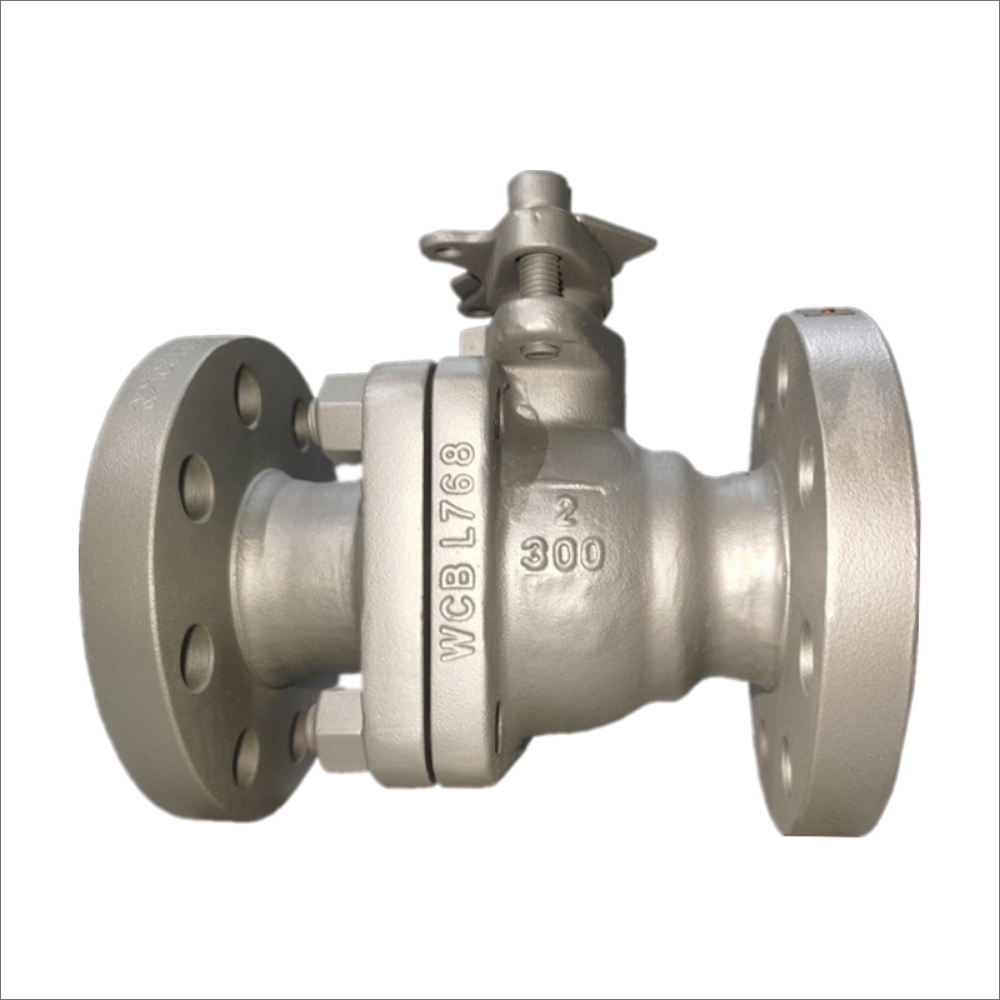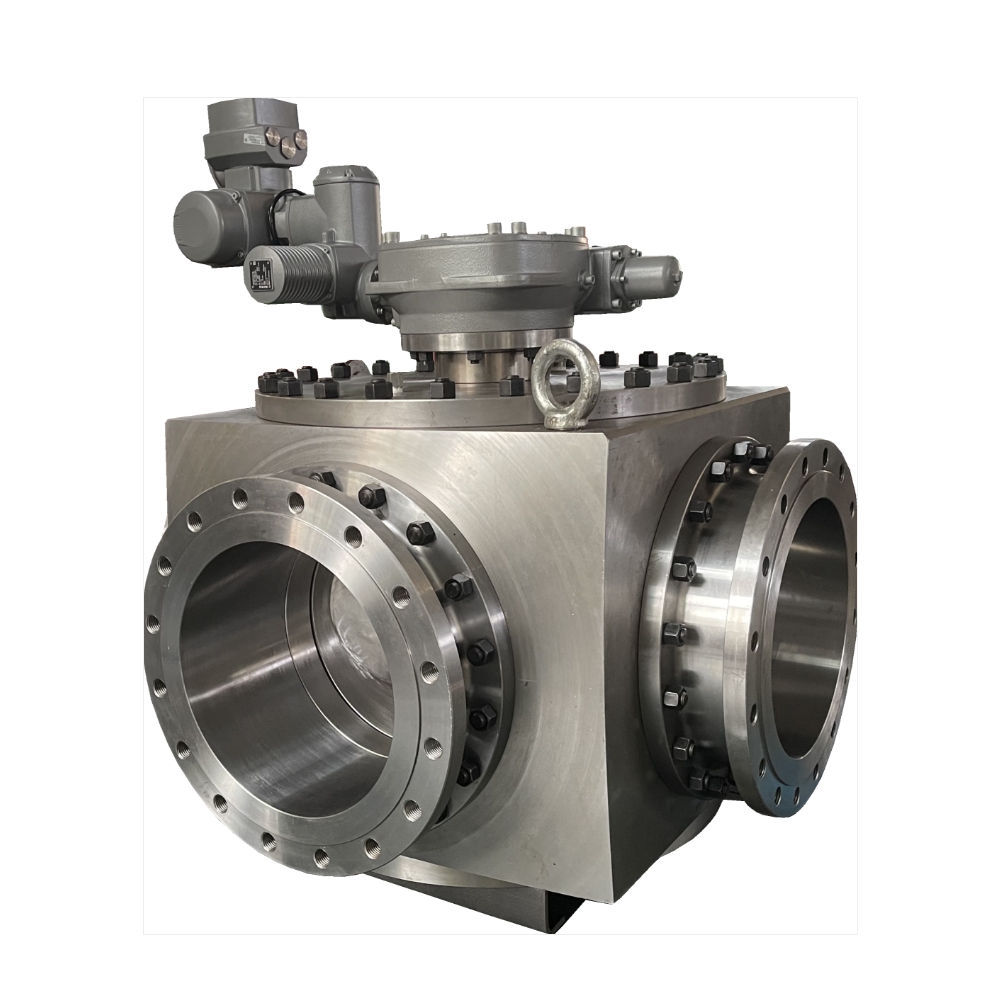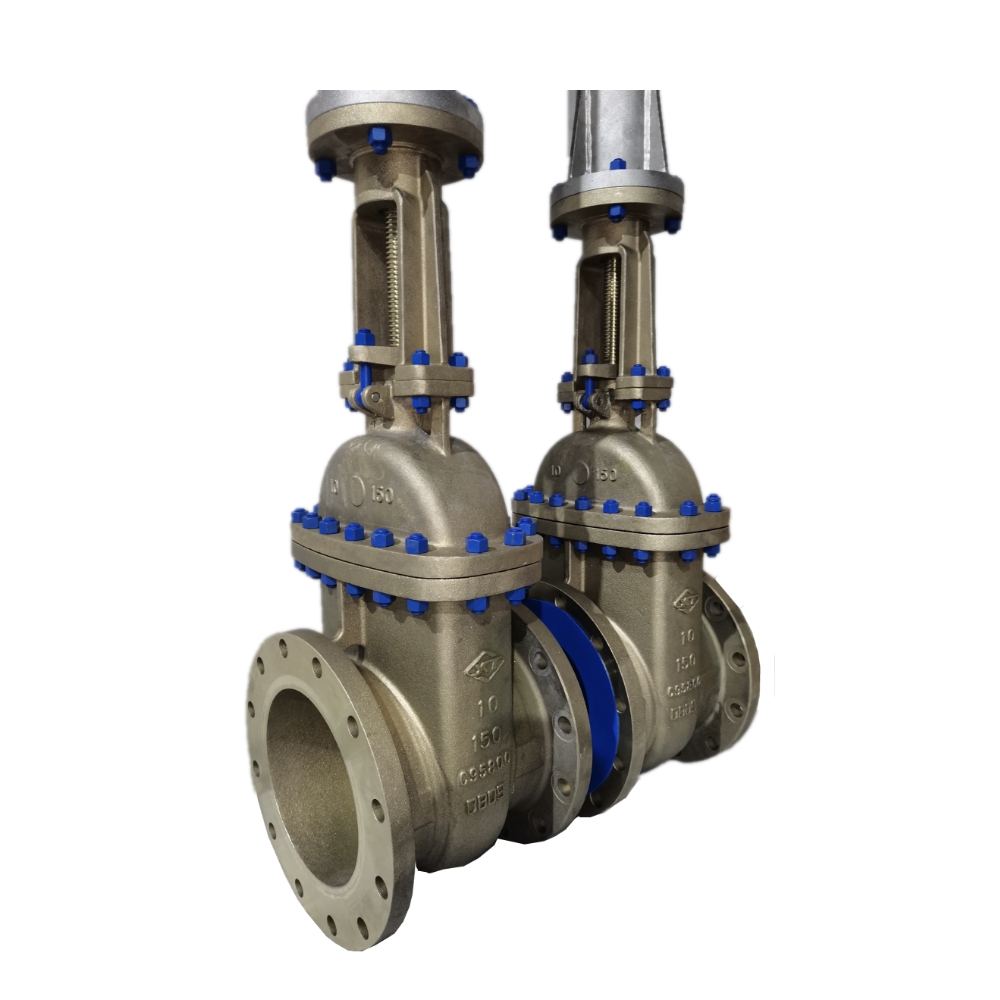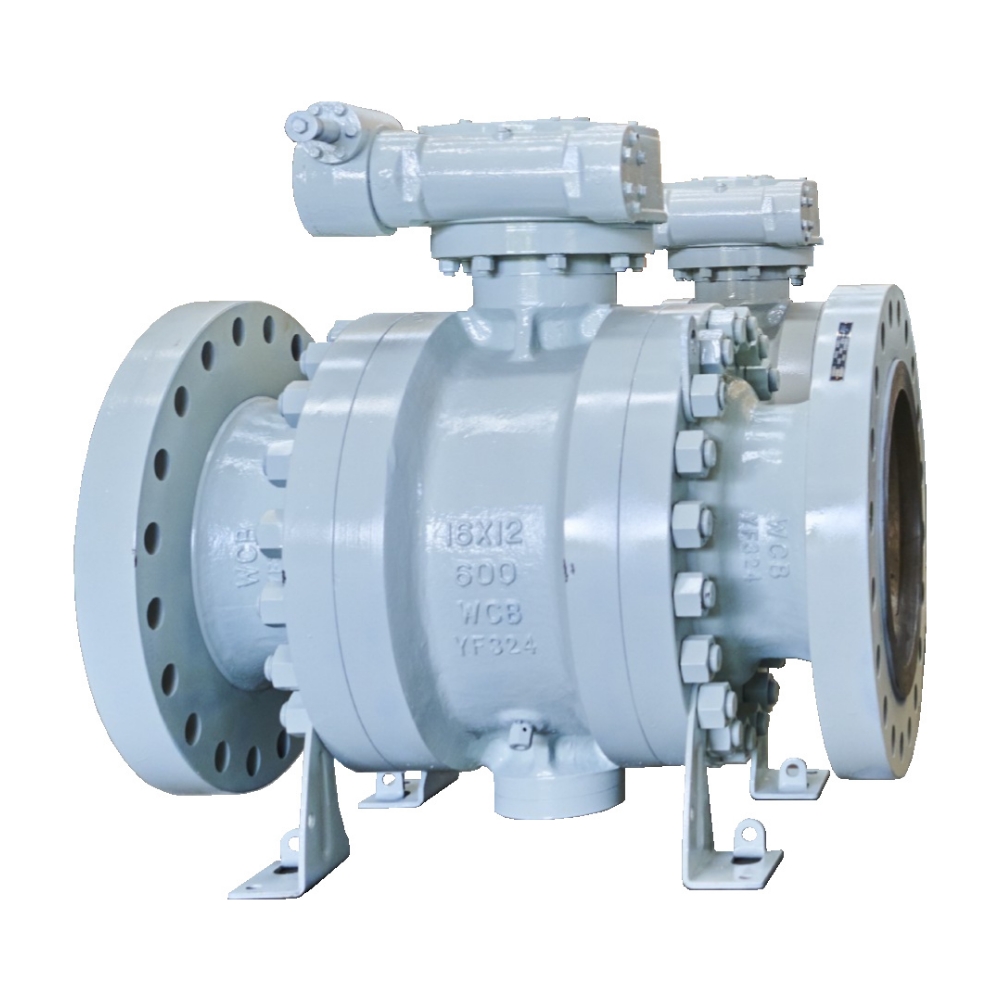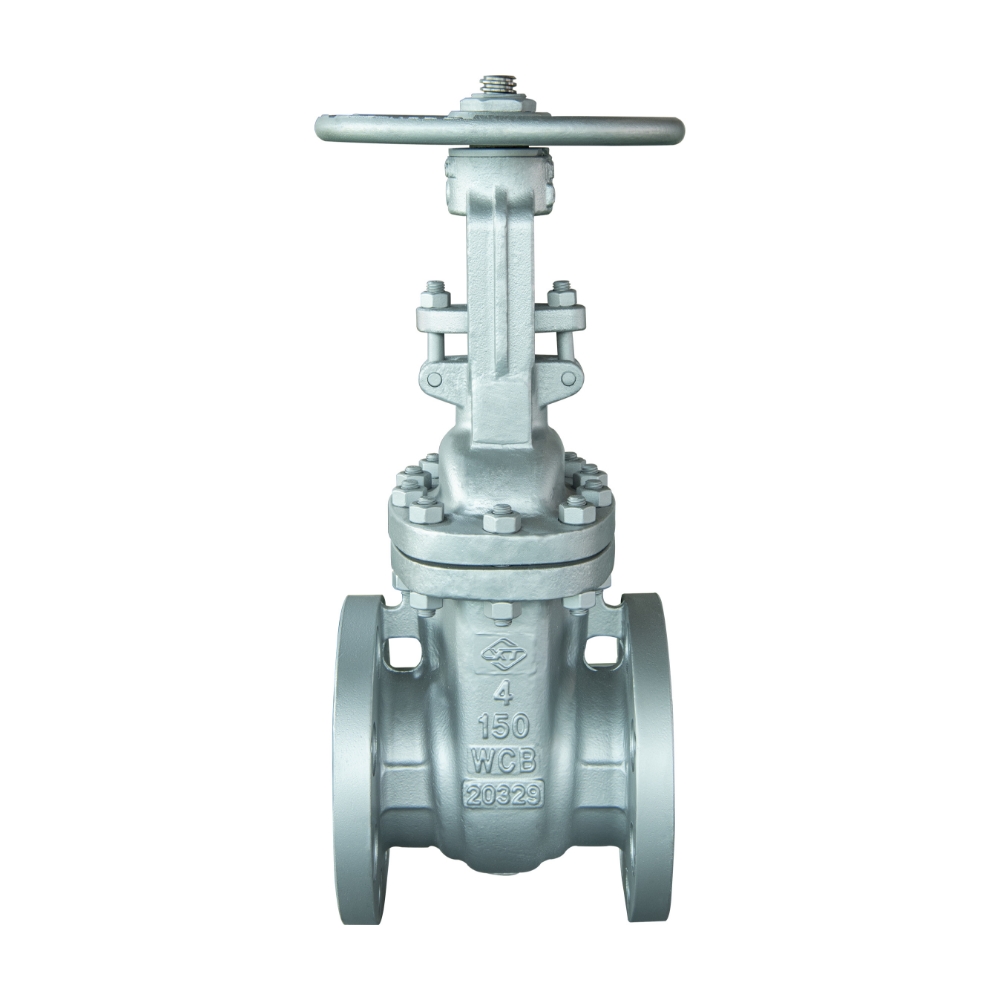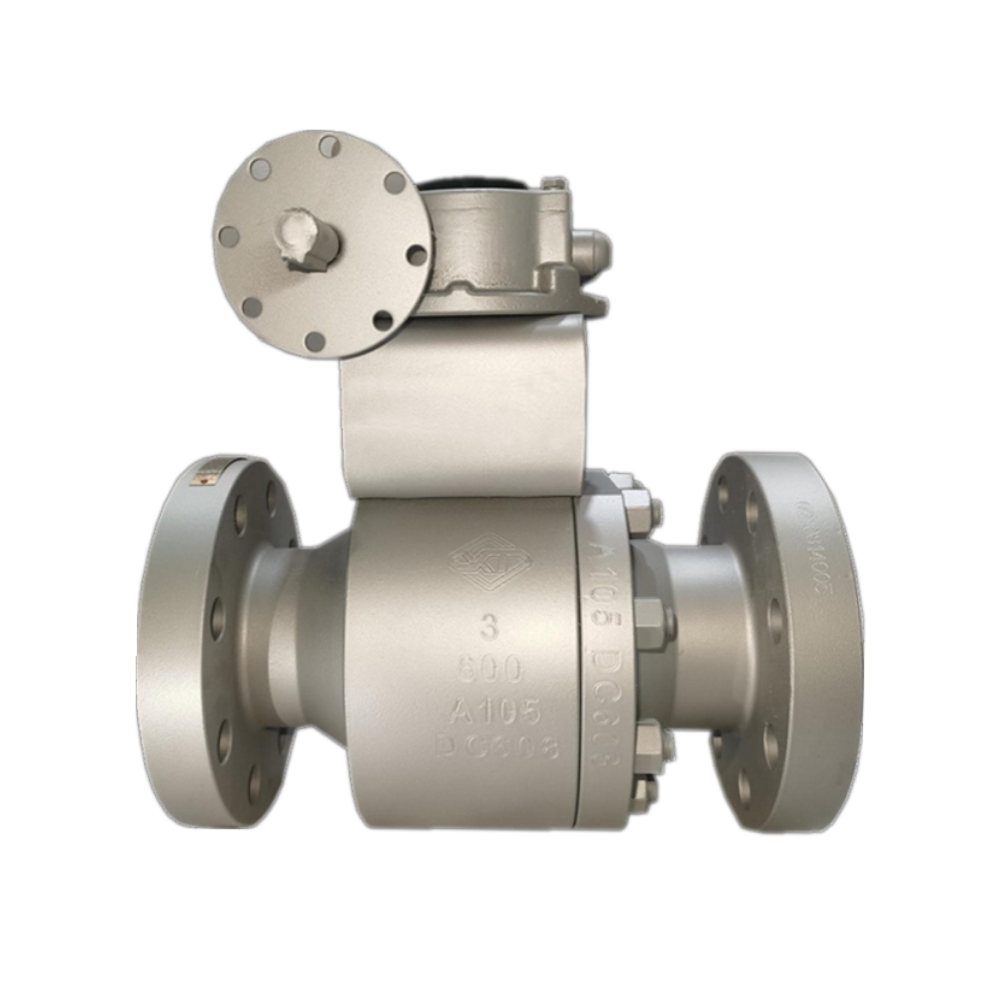API FLANGE CARBON STEEL BALL VALVE
Description
Size Range: 1/2″ up to 48″ Pressure Range: ANSI 150LB to 2500LB End Connection: BW,RF,RTJ Operate: Lever, Gear, Actuator Material: Carbon Steel Seals: Soft Seal, Metal to Metal
Brief Introduction of Flange Ball Valve
The flange ball valve refers to a ball valve made of the flange material. The ball valve is a widely used new type of valve. The ball valve is mainly used to cut off, distribute and change the flow direction of the medium in the pipeline. It only needs to be operated with a 90-degree rotation and a small turning torque to close tightly.
| Valves Design: | API6D, API608 |
| Face to Face: | ANSI B16.10 |
| End Connection: | ANSI B16.5, ANSI B16.25 |
| Testing&Inspection: | API6D, API598 |
| Fire Safe Testing: | API607, ISO10497, API6FA |
| Suitable Medium: | Water, Oil, Air, And Some Corrosive liquid |
Application of 3 Way Ball Valve:
1. The flange ball valve has the action of rotating 90 degrees, the cock body is a ball.
2. There are circular through holes or channels passing through its axis.
3. Flanged ball valves are most suitable for switching and shut-off valves. The development has designed the ball valve so that it can be used for throttling and flow control, such as V-type ball valves.
stainless steel ball valve function: mainly used to switch, cut off, or connect the medium in the pipeline, can also be used for fluid regulation and control.
Applicable medium: water, solvent, acid, natural gas, oxygen, hydrogen peroxide, methane and ethylene
Flange ball valve applications: chemical, petrochemical, petroleum, paper, mining, power, liquefied gas, food, pharmaceutical, water supply and drainage, municipal, mechanical equipment, electronic industry, urban construction, and other fields.
Flanged ball valves are also suitable for media with harsh working conditions, such as oxygen, hydrogen peroxide, methane, and ethylene, etc., and are widely used in various industries. The ball valve body can be integral or combined.
Main Features of Flange Ball Valve:
The main features of the flanged ball valve are its compact structure, reliable sealing, simple structure, and easy maintenance. The sealing surface and the spherical surface are often in a closed state, which is not easy to be eroded by the medium and is easy to operate and maintain. It is suitable for water, solvents, acids, and natural gas. General working medium.
The difference between the Ball Valve and Gate Valve
Gate valve: It is also called a gate valve or gate. There is a gate in the valve body perpendicular to the flow direction of the medium. Adjust the height of the gate to adjust the flow of fluid. Gate valves generally close more slowly. It is generally used in the main control valve of heating pipes and water supply and drainage pipes. Ball valves have been widely used in petroleum, chemical, power generation, papermaking, atomic energy, aviation, rockets, and other departments, as well as people’s daily lives.
The gate valve has the advantages of low resistance, tight closing, and no water hammer phenomenon. It is widely used in various liquid and gas shut-off valves. It also has a certain adjustment function, but when it is partially opened, the shutter is susceptible to wet by the fluid, the fluid will cause the vibration of the shutter when the fluid flows, and the sealing surface is easy to wear.
The disadvantage of the gate valve is that the structure is complicated, the price is relatively expensive, and it is not easy to repair, and the solid matter is easily deposited in the valve seat groove and is not tightly closed.
Therefore, it is not suitable for pipelines containing fibrous or solid substances in the fluid. It is commonly used in air, steam, and oil media pipelines, and also used as a vent valve and a valve for low-silk systems.
Gate valve is one of the commonly used shut-off valves, mainly used to connect or cut off the medium in the pipeline, not suitable for regulating the flow of the medium. Q valve is suitable for pressure, temperature, and caliber range, especially for medium and large caliber pipes.
Ball valve: A ball with an opening is used as the valve core, and the ball is rotated to control the opening and closing of the valve. Ball valves are used in petroleum refining, long-distance pipelines, chemicals, papermaking, pharmaceuticals, water conservancy, electricity, municipal administration, steel, and other industries.
The ball valve has a simple structure, the ball valve is lighter in weight than the globe valve, the structure is relatively simple, and its overall weight is very light, so it can play a better effect in low-temperature media systems; the sealing surface is easy to process, the sealability is also good, and the operation Convenient, fast switching, short start-up and closing time, it can make the test system get a quick optimization, and there will be no impact during the starting and closing of the valve.
But it can not be used to adjust the flow rate. It is suitable for high-pressure (up to 320 gauge) pipelines. At present, due to the limitation of sealing materials, it can only be used below 200 ℃, and can also be used for suspensions and various media with high viscosity. And its regulating performance is worse than the cut-off valve, especially the pneumatic valve (or electric valve).
XINTAI VALVE is a professional and excellent flange ball valve manufacturer, welcome to purchase!

Related products
BALL VALVE
- 3-Way L Port Ball Valve
- Full-Welding Ball Valve
- V-Notch Valve
- Undergroud Ball Valve
- Top Entry Ball Valve
- Thread Ball Valve
- Soft Sealing Ball Valve
- Side Entry Ball Valve
- Metal Sealing Ball Valve
- Forged Trunnion Ball Valve
- 3-Way T Port Ball Valve
- Forged Floating Ball Valve
- Flange Type Segment Ball Valve
- Double Block and Bleed Valve
- Casting Trunnion Ball Valve
- Casting Floating Ball Valve
- Bronze Ball Valve
- 4-Way Ball Valve
- Wafer Type Segment Ball Valve
BUTTERFLY VALVE
- Centerline Lug Type Butterfly Valve
- Centerline Wafer Type Butterfly Valve
- Double Eccentric Butterfly Valves
- High Performance Butterfly Valve
- Lined Butterfly Valve
- Resilient Seated Butterfly Valve
- Triple Eccentric Butterfly Valves
CHECK VALVE
- Bronze Check Valve
- Butt Welding Check Valve
- Casting Check Valve
- Dual Plate Check Valve
- Forged Check Valve
- Globe Check Valve
- Lift Check Valve
- Pressure Self-Sealing Check Valve
- Socket Welding Check Valve
- Swing Check Valve
- Thread Check Valve
- Wafer Check Valve
CONTROL VALVE
- Electric Actuator Ball Valve
- Electric Actuator Butterfly Valve
- Electric Actuator Gate Valve
- Electric Actuator Globe Valve
- Gas Over Oil Actuator Ball Valve
- Linear Control Valve
- Pneumatic Actuator Ball Valve
- Pneumatic Actuator Butterfly Valve
- Pneumatic Actuator Gate Valve
- Pneumatic Actuator Globe Valve
CRYOGENIC VALVE
- Cryogenic Ball Valve
- Cryogenic Check Valve
- Cryogenic Gate Valve
- Cryogenic Globe Valve
GATE VALVE
- Bellow Gate Valve
- Bidirectional Knife Gate Valve
- Bronze Gate Valve
- Butt Welding Gate Valve
- Casting Wedge Gate Valve
- Forged Wedge Gate Valve
- Knife Gate Valve
- Parallel Slide Gate Valve
- Pressure Self-Sealing Gate Valve
- Socket Welding Gate Valve
- Thread Gate Valve
- Through Conduit Knife Gate Valve
GLOBE VALVE
- Angle Type Globe Valve
- Bellow Globe Valve
- BS 1873 Globe Valve
- Butt Welding Globe Valve
- Casting Globe Valve
- Forged Globe Valve
- Pressure Self-Sealing Globe Valve
- Socket Welding Globe Valve
- Thread Globe Valve
Plug Valve
- Plug Valve
SAFETY VALVE
- High Performance Steam Safety Valve
- Jacketed Safety Relief Valves
- Pilot Operated Safety Valve
- Spring Load Safety Valve
STRAINER
- Basket Strainer
- Cast Iron Y Strainer
- Thread Y Strainer
- Y Strainer
